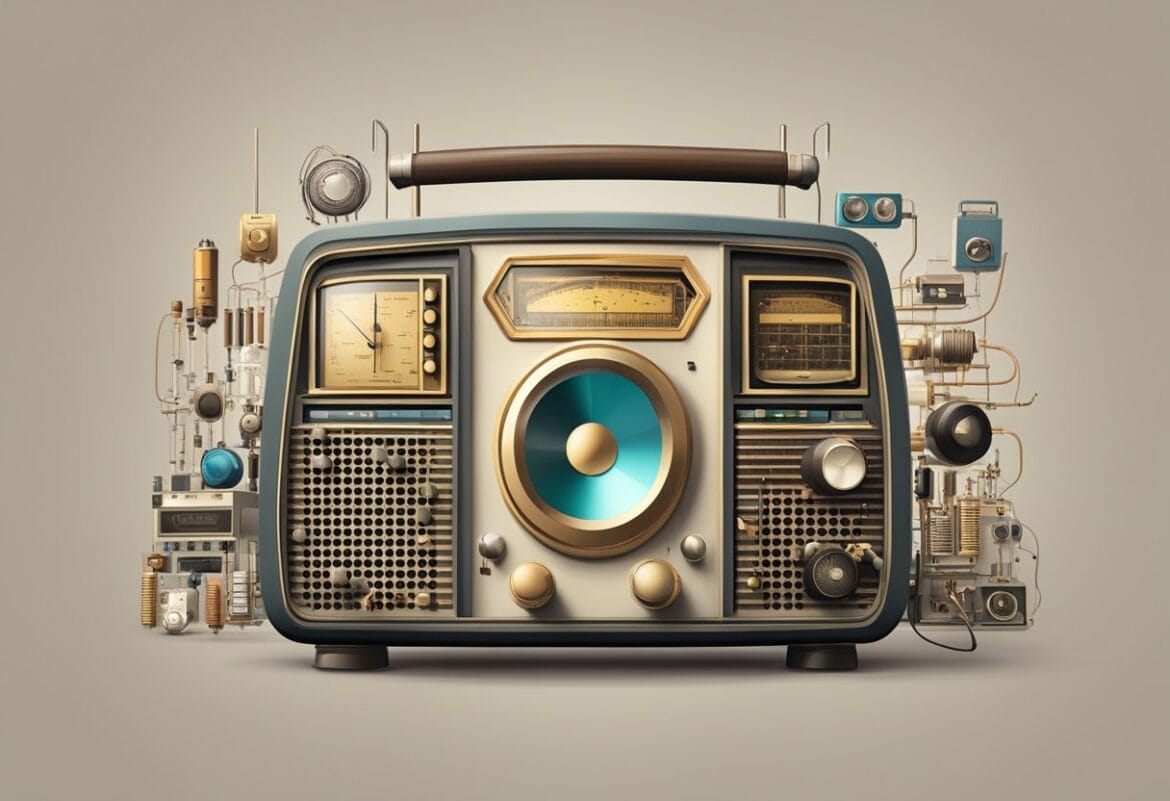Table of Contents
Radio has come a long way since its inception. The evolution of radio began in 1900 when the first wireless transmission of the human voice was achieved. This breakthrough paved the way for radio to become a revolutionary form of communication and entertainment.

Radio developed into the first electronic mass medium, dominating the airwaves from about 1920 to 1945. During this time, radio played a crucial role in shaping mass culture alongside newspapers, magazines, and movies. The period between the late 1920s and early 1950s is often referred to as the Golden Age of Radio, featuring a diverse range of programming that captivated millions of listeners.
As technology advanced, radio continued to evolve. The introduction of television in the mid-1940s prompted radio to transform its content and role in society. Despite challenges, radio has remained a significant part of the media landscape, adapting to new technologies and changing listener preferences.
Key Takeaways
- Radio evolved from wireless telegraphy to become a dominant mass medium in the early 20th century
- The Golden Age of Radio saw diverse programming that shaped popular culture
- Radio has continuously adapted to technological advancements and societal changes
Invention and Early Development

The invention of radio sparked a technological revolution in communication. Key figures and competing claims shaped its early development.
Guglielmo Marconi and Early Pioneers
Guglielmo Marconi played a crucial role in radio’s invention. In 1895, he sent and received his first radio signals in Italy.
Marconi improved on earlier work by Heinrich Hertz and others. He developed a practical system for long-distance wireless communication.
In 1901, Marconi achieved a major breakthrough. He transmitted the first transatlantic radio signal from England to Newfoundland.
Other pioneers like Nikola Tesla and Alexander Popov also made important contributions to radio technology during this time.
The Technological Race of the Early 20th Century
The early 1900s saw rapid advances in radio technology. Companies and inventors competed to improve radio systems.
Key developments included:
- Better transmitters and receivers
- Vacuum tube technology
- Voice transmission capabilities
By 1920, radio broadcasting began in the United States and other countries. This marked the start of radio as a mass medium.
The military also drove radio innovation. World War I accelerated the development of radio for communication and navigation.
First Invented By Controversy JC Bose or Marconi
A debate exists over who truly invented radio first. Some argue for Jagadish Chandra Bose as the original inventor.
Bose demonstrated wireless signaling in Calcutta in 1895, the same year as Marconi’s early experiments. He used microwave frequencies to ring a bell remotely.
Bose’s work on electromagnetic waves predated Marconi’s. However, he didn’t seek patents or commercialize his inventions.
Marconi is often credited as radio’s inventor due to his practical systems and business success. The debate highlights the complex nature of technological innovation.
Radio’s Golden Age

The 1920s and 1930s marked a transformative era for radio. This period saw rapid growth in broadcasting, new regulations, and the rise of commercial radio networks.
The 1920s Boom and Radio Act of 1927
Radio took off in the 1920s. The first commercial radio station, KDKA, began broadcasting in Pittsburgh in 1920. Soon, radio stations popped up across the country.
As the airwaves got crowded, the government stepped in. The Radio Act of 1927 created the Federal Radio Commission. This group managed the growing number of radio stations.
The act also set rules for broadcasting. It made sure stations served the public interest. This law shaped how radio would grow in the coming years.
Growth of Commercial Broadcasting
Commercial radio networks emerged in the late 1920s. NBC and CBS became major players. They created popular shows and reached wide audiences.
Advertising became key to radio’s success. Companies sponsored programs to promote their products. This model funded the creation of new, exciting content.
By the 1930s, radio was in most American homes. People tuned in for news, entertainment, and music. The Golden Age of Radio had begun, lasting until the 1950s when TV took over.
During this time, radio shaped American culture. It brought people together and created shared experiences. The medium’s influence on society was profound and long-lasting.
Technological Evolution
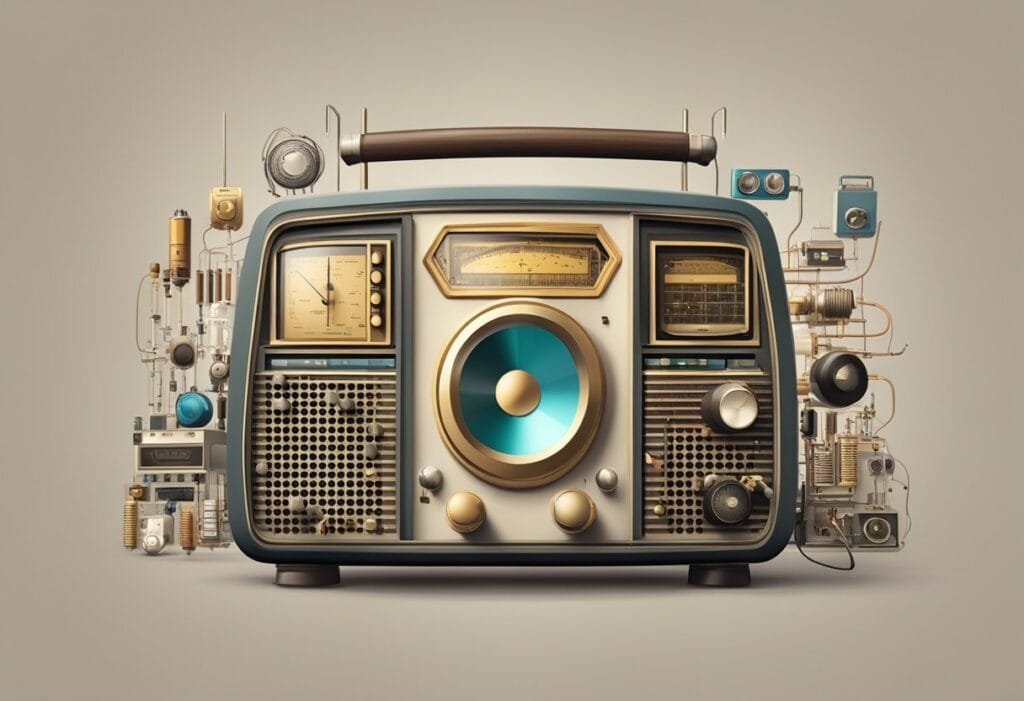
Radio technology advanced rapidly in the 20th century. New innovations improved sound quality and made radios more portable.
From AM to FM Radio
AM radio dominated early broadcasting. It used amplitude modulation to transmit signals. In the 1930s, Edwin Armstrong invented frequency modulation (FM) radio. FM offered clearer sound with less static.
FM radio grew slowly at first. World War II paused its development. After the war, FM stations increased. By the 1970s, FM overtook AM in popularity.
FM had several advantages:
- Better sound quality
- Less interference
- Ability to broadcast in stereo
The growth of FM radio changed music broadcasting. It allowed for higher fidelity music transmission. This helped FM become the preferred format for music stations.
Transistor Radios and Portability
Transistor radios revolutionized radio in the 1950s and 60s. They replaced bulky vacuum tubes with small transistors. This made radios much smaller and more portable.
Key features of transistor radios:
- Compact size
- Battery-powered
- Affordable for many consumers
Transistor radios allowed people to listen anywhere. Teens could take music with them. News and information became more accessible.
The transistor radio’s popularity exploded. It changed how people consumed radio content. Portable radios became common in cars, at the beach, and during outdoor activities.
Expansion and Diversification
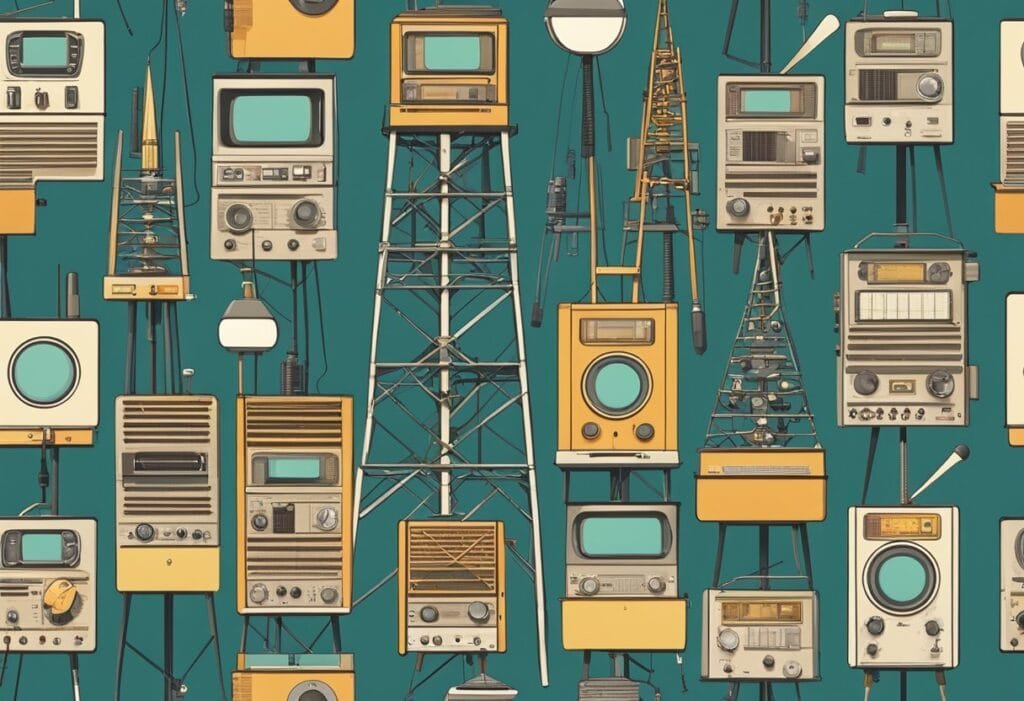
Radio expanded its reach and influence in society through new formats and programming. Public stations emerged as important sources of news and culture, while radio played a key role in shaping popular music tastes.
Public Radio Stations and Their Impact
Public radio stations grew as an alternative to commercial broadcasting. In 1970, National Public Radio launched in the United States. NPR focused on in-depth news, analysis, and cultural programming. It built a network of member stations across the country.
Public radio filled gaps left by commercial stations. It provided long-form journalism and educational content. Many stations aired classical music and jazz. This expanded listening options in local communities.
NPR shows like “All Things Considered” became popular. They offered deeper coverage of news and current events. Public stations also developed local programming to serve their areas.
The Influence of Radio on Music and Culture
Radio shaped popular music trends for decades. It exposed listeners to new artists and genres. In the 1950s and 60s, radio helped spread rock and roll. Top 40 formats became common. They played hit songs in heavy rotation.
DJs turned into tastemakers and celebrities. Their song choices could make or break new acts. Radio also promoted concerts and music events.
Beyond music, radio talk shows tackled social issues. Comedy programs entertained millions. Radio dramas like “The War of the Worlds” captured listeners’ imaginations.
Sports broadcasts brought fans closer to the action. Play-by-play announcers became legendary figures in their own right.
The Societal Role of Radio Broadcasting

Radio broadcasting has shaped society in profound ways. It has served as a vital tool during conflicts, brought communities together, and played a key educational role.
Radio in Times of Conflict and Community
Radio broadcasts have been crucial during wartime. They provided real-time updates and boosted morale for troops and civilians alike.
In World War II, radio united nations through shared information and patriotic programming. It allowed leaders to speak directly to citizens, fostering a sense of connection and purpose.
Beyond conflicts, radio strengthened local communities. It aired town hall meetings, local news, and community events. This helped people feel more connected to their neighbors and local issues.
Radio talk shows emerged as a popular format for public discourse. They gave listeners a platform to voice opinions and engage in debates on important topics.
Educational and Public Service Broadcasting
Radio quickly became a tool for education. Schools used radio programs to supplement classroom learning. This was especially valuable in rural areas with limited resources.
Public radio stations focused on educational content and cultural programming. They aired lectures, classical music, and in-depth news analysis.
Many countries established public broadcasting services. These aimed to inform, educate, and entertain without commercial pressures.
Radio also served public health needs. It spread vital information during disease outbreaks and natural disasters. This helped save lives and coordinate relief efforts.
Regulation and Legislation
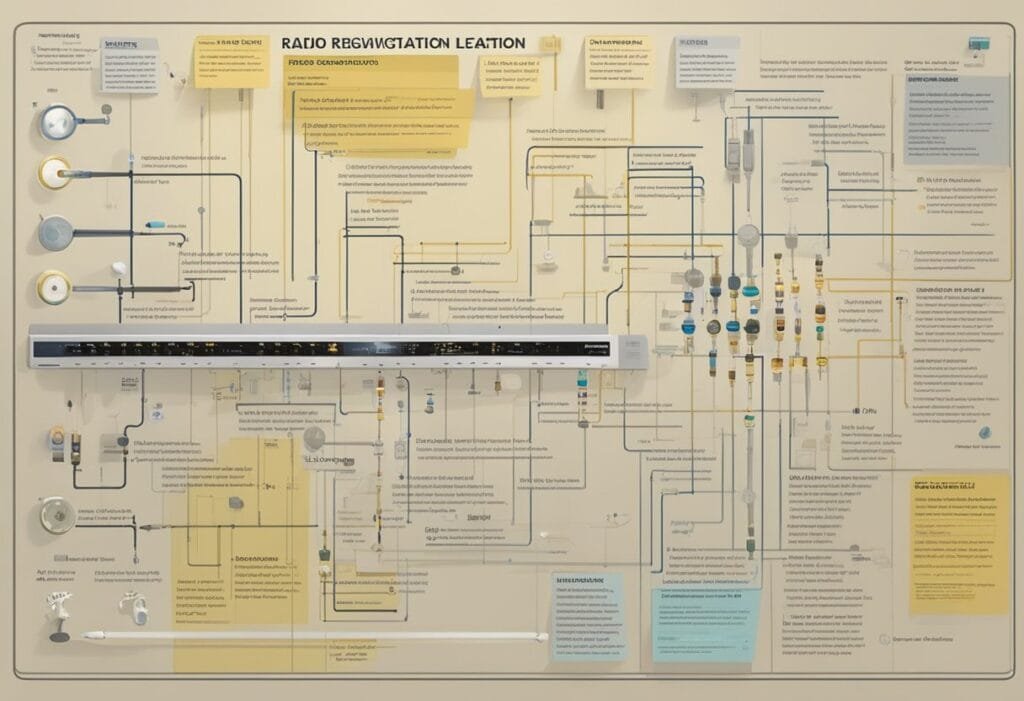
Radio broadcasting needed rules to manage its rapid growth. Laws and policies shaped how radio stations operated and who controlled the airwaves.
Managing the Airwaves: Policies and Controversies
The Radio Act of 1927 was a key moment in radio regulation. It created a system to license stations and manage the radio spectrum.
This law aimed to prevent chaos on the airwaves. It set rules for who could broadcast and on what frequencies.
The act led to debates about free speech and government control. Some worried about censorship, while others saw regulation as necessary.
Commercial broadcasting grew quickly under the new rules. Big networks like CBS and NBC gained a 70% share of U.S. broadcasting by the early 1930s.
Intellectual Property and the Airwaves
Radio brought new challenges for copyright law. Music played on air raised questions about royalties and fair use.
Stations had to navigate complex rules about what they could broadcast. This included limits on playing recorded music and live performances.
Radio Corporation of America (RCA) made key agreements with other companies. These deals shaped how technology and content were shared.
Patent disputes were common in radio’s early days. Companies fought over who owned the rights to crucial inventions.
These battles influenced which technologies became standard in the industry.
Modern Radio and Technological Advances

Radio has evolved dramatically in recent decades. New technologies have expanded listening options and improved audio quality for listeners worldwide.
Digital Audio and Satellite Radio
Digital audio broadcasting brought clearer sound to radio. It reduced static and interference common with analog signals. Digital radio also allowed more stations in the same amount of spectrum.
Satellite radio launched in the early 2000s. It offered hundreds of channels with CD-quality audio across wide areas. Services like SiriusXM provided commercial-free music, talk, and sports programming to subscribers.
Digital and satellite radio expanded choice for listeners. They could access more diverse content than ever before. These technologies also improved the listening experience with better sound.
Internet Radio and Streaming
The rise of the internet transformed radio again. Online radio stations emerged, free from physical broadcasting limits. Listeners could tune in to stations from around the world.
Streaming platforms like Spotify and Pandora offered personalized radio-style experiences. Users could create custom playlists or listen to curated stations based on their tastes.
Podcasts became a popular audio format. They allowed anyone to create on-demand radio-style content. Listeners could download shows on any topic imaginable.
These innovations made radio more interactive and customizable. Audiences gained control over what, when, and how they listened to audio content.
The Impact of Radio on Other Media
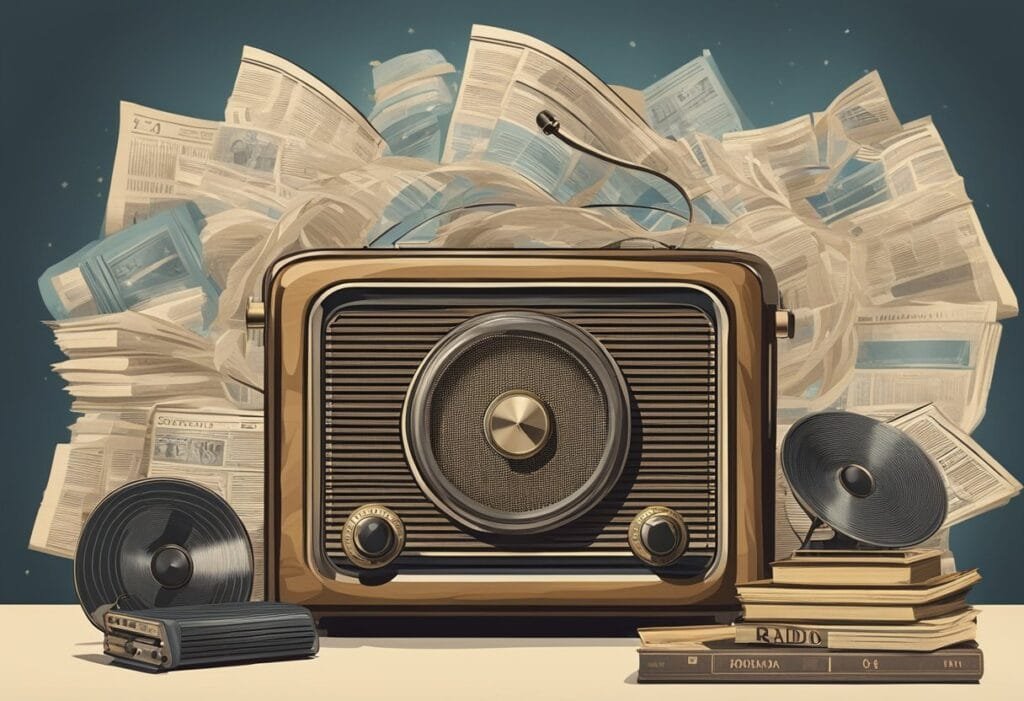
Radio has shaped other forms of media and communication. It paved the way for new technologies and created opportunities for hobbyists to innovate.
Convergence with Television and the Internet
Radio and television have a long history of interaction. In the early days, many radio stars transitioned to TV. This shift brought familiar voices and personalities to the new visual medium.
As technology advanced, radio adapted. Many stations now stream online, reaching wider audiences. Podcasts emerged as a new form of audio content, blending radio-style programming with on-demand listening.
Some radio shows now have video components. This allows listeners to watch live studio recordings or see behind-the-scenes content. The lines between radio, TV, and internet content continue to blur.
Amateur Radio: Hobbyists and Innovators
Amateur radio operators have played a key role in advancing radio technology. These enthusiasts experiment with different frequencies and equipment, often pushing the boundaries of what’s possible.
Many innovations in radio came from amateurs. They’ve developed new transmission methods and improved existing ones. During emergencies, amateur operators provide crucial communication support.
Ham radio remains popular today. Operators connect with others around the world, participate in contests, and assist in disaster relief efforts. This hobby continues to attract tech-savvy individuals interested in radio communication systems.
Radio’s Cultural Legacy

Radio shaped entertainment and communication in profound ways. It introduced new forms of storytelling and created celebrities who became household names.
Radio Drama, Talk Shows, and Media Evolution
Radio dramas captivated audiences in the 1930s and 1940s. Shows like “The Shadow” and “The War of the Worlds” sparked imaginations and proved the power of audio storytelling.
Radio waves carried these stories into homes across the nation. Families gathered around their radios, creating shared experiences and memories.
Talk shows emerged as another popular format. They gave listeners a chance to hear directly from experts, celebrities, and politicians. This direct connection helped shape public opinion on important issues.
As technology evolved, radio adapted. It moved from AM to FM, then to satellite and internet streaming. Each step expanded radio’s reach and influence.
The Lasting Influence of Radio Personalities
Radio created some of the first media celebrities. Voices like Edward R. Murrow became trusted sources of news and commentary.
DJs and hosts developed loyal followings. Their personalities and music choices shaped popular culture and influenced fashion and language trends.
Some radio personalities became cultural icons. Casey Kasem’s “American Top 40” countdown show ran for decades, helping define pop music tastes.
Radio also launched the careers of many comedians and actors. Stars like Bob Hope and Orson Welles got their start on radio before moving to film and television.
The intimacy of radio allowed these personalities to connect with listeners in unique ways. Many people felt like they knew their favorite radio hosts personally.
The Future of Radio
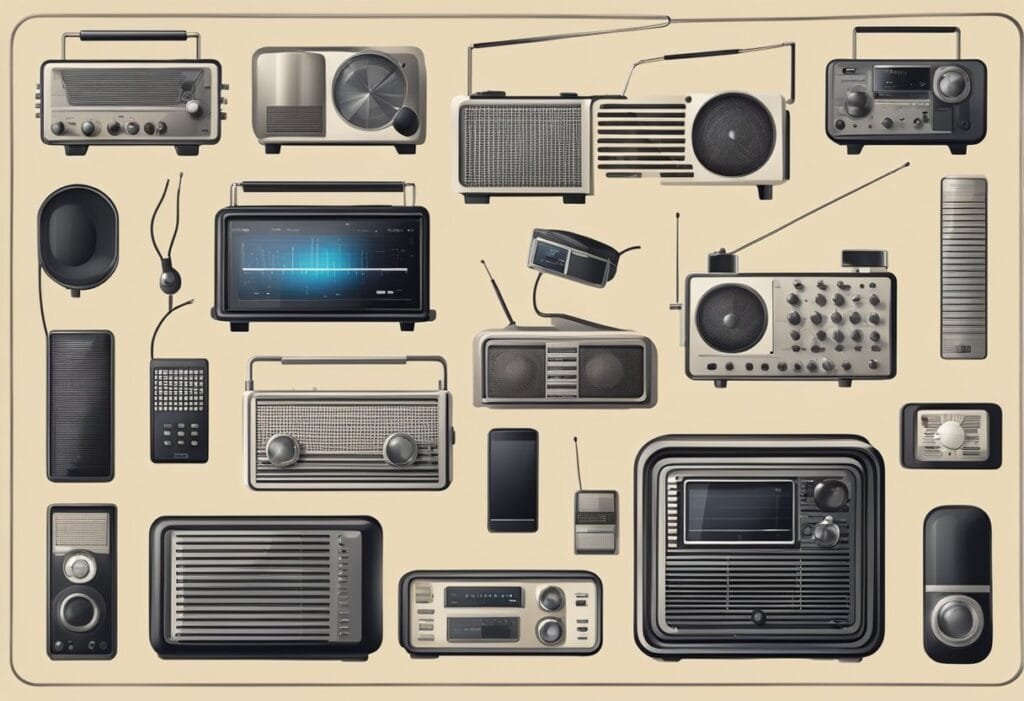
Radio is adapting to new technologies and changing listener habits. Digital platforms and personalized content are shaping its evolution.
Emerging Technologies and Platforms
Digital radio is improving sound quality and expanding listening options. Listeners now enjoy clearer audio and more diverse content.
Streaming services and smart speakers are changing how people access radio. These platforms make it easy to listen on-demand and discover new stations.
Artificial intelligence is helping radio stations personalize content. AI can analyze listener preferences and suggest relevant programming.
5G networks will enable faster, more reliable streaming. This could lead to new interactive radio experiences and real-time listener engagement.
The Continual Evolution of Radio Content
Radio content is becoming more diverse and targeted. Stations are creating niche programming to attract specific audiences.
Podcasts are blending with traditional radio formats. Many radio shows now offer podcast versions, expanding their reach.
Data analytics are helping radio stations make smarter programming decisions. They can track listener behavior and adjust content accordingly.
Interactive features are becoming more common. Listeners can now vote on songs, participate in live polls, and engage with hosts in real-time.
Visual elements are being added to radio broadcasts. Some stations stream video content alongside audio, creating a multi-media experience.

